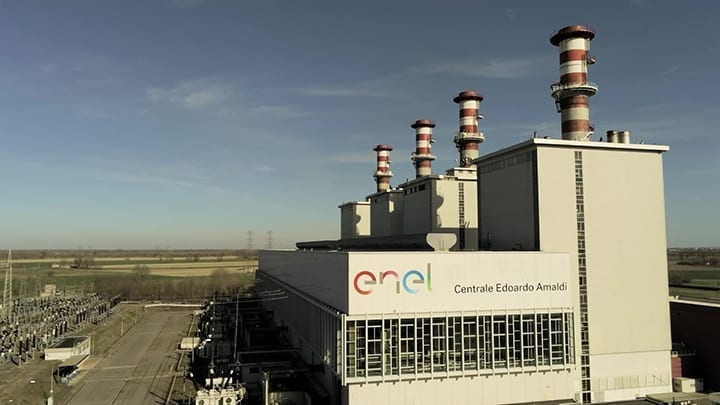Cutting-edge control automation will allow Europe’s biggest utility to extend the lifecycle of its assets at La Casella combined cycle power plant.

Italian energy major Enel, through power engineering company Ansaldo Energia, is modernizing its gas turbine control systems at La Casella combined cycle power plant – located in Castel San Giovanni, Piacenza, Italy – to extend its life cycle and as a step of its wide decarbonization program.
ABB has delivered a specially tailored automation system for unit 4 of the 1,407-megawatt (MW) power plant La Casella, replacing Siemens Teleperm XP control system. The same solution will be implemented on unit 3 in 2021.
The advanced ABB Ability™ Symphony® Plus DCS (distributed control system) integrates applications such as performance monitoring, predictive diagnostics, optimization/advanced control, combustion monitoring and alarm management.
The validation and the optimization of the logics of the new ABB control system has been carried out in collaboration with Ansaldo Energia and their turbine simulators.
Innovative automation solutions
“ABB’s intelligent and integrated platform will enable digital transformation for La Casella by helping to optimize the gas turbine performance, resulting in higher productivity, increased efficiency and enhanced safety at the Italian power plant” said Sergio Durando, Local Division Manager, Italy, Croatia, Turkey, Algeria Energy Industries, ABB.
“At the same time, our solution helps boost availability and profitability by extending the life cycle of Enel’s assets, thus allowing Enel to continue capitalize on their past investment without no disruption”, remarked Sergio Durando, ABB.
The solution, based on ABB Ability™ Symphony® Plus, has been developed and tested in Genova, Italy, at one of ABB’s three Global Excellence Centers for rotating machines.
As part of the upgrade, ABB translated the system control logic and provided pre-assembled I/O cards. Dismantling of the installed system on site was also included in the scope.
Additionally, factory acceptance testing (FAT) and one-to-one simulation in ABB laboratories enabled quick onsite commissioning.
ABB’s flexible solution maintains the same number of cabinets and the same spaces, which retains the footprint of the existing system. In addition, in order to preserve the operator experience and comfort, ABB will enhanced the original HMI (human-machine interface) – maintaining the same graphic symbols and colors, command faceplates and alarm philosophy – to enable highly informed decisions throughout operations from control room to the board room.
Cabling errors were minimized through the replacement of central processing units (CPU) and I/O while maintaining the same marshalling cabinets and terminals interfaced to field cables to avoid loop-check.
Safe and sustainable operations
ABB’s control solution increases safety with a new SIL 3 (Safety Integrity Level 3) compliant integrated protection system. It also eliminates PC-based obsolescence, minimizes maintenance and improves cybersecurity levels by virtualizing the whole system.
Thanks to ABB Ability™ Symphony® Plus, La Casella CCPP unit 4 is the first complete control system that meets the new cybersecurity regulations of the Italian government.
“The Energy Industries team has a longstanding relationship with Enel and Ansaldo Energia. We are proud to work with them to provide the best-in-class technologies that will enable high-quality, stable and reliable power generation,” noted Sergio Durando, ABB.
In the past years, ABB partnered with Enel on La Casella CCPP implementing several innovative solutions. For example, the complete renovation of the plant control room and the development of the remote control system of Porto Corsini power station directly from La Casella CCPP.
ABB’s advanced control automation will help Enel to contribute to grid stability while supporting a complex energy system that enables a more sustainable environmental footprint.







